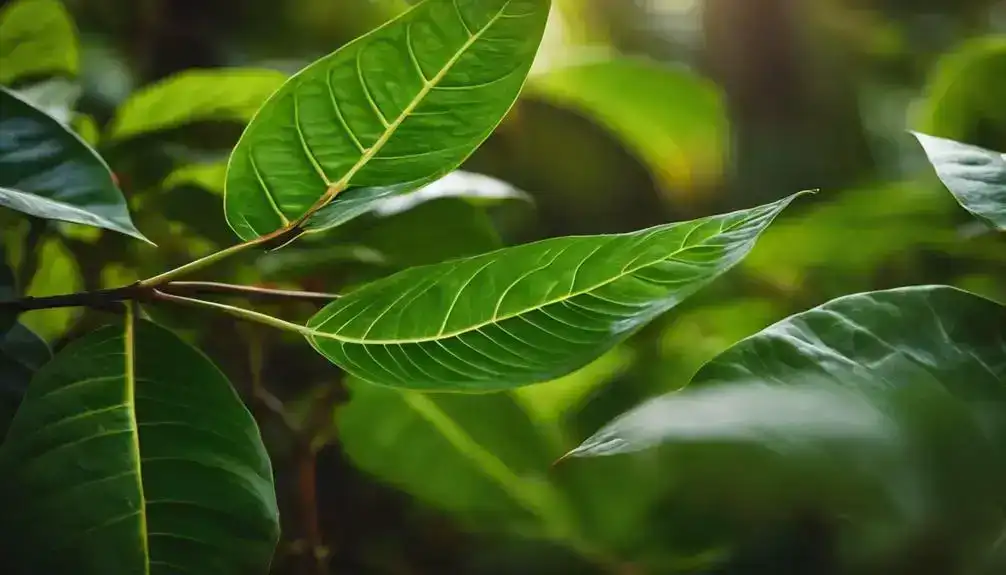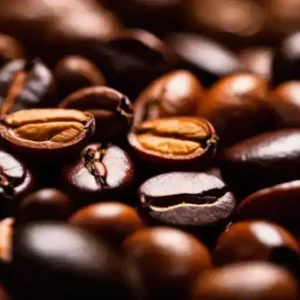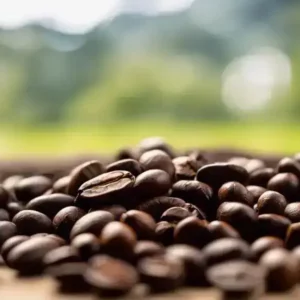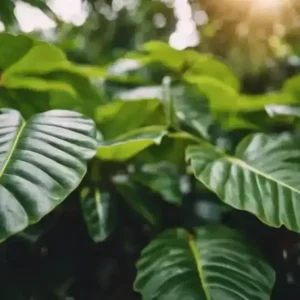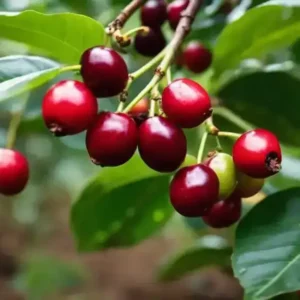When comparing Conilon and Robusta coffee, note the genetic differences and environmental adaptations. Conilon, from Brazil, Vietnam, India, is a subspecies of C. canephora like Robusta, from Africa, Indonesia, Vietnam. Robusta evolved in Africa, while Conilon descended from C. canephora. Robusta excels in photosynthesis and growth, with higher caffeine content and resilience.
Conilon, ideal for drought resistance, offers unique traits like lower dark respiration. Understanding these distinctions helps in selecting suitable coffee plants for diverse climates. Each variety’s distinct strategies impact development and productivity differently, essential for sustainability.
For more insights on these coffee types, explore further. With over a decade of experience in coffee cultivation and a degree in agricultural science specializing in coffee production, I provide expert insights on the nuances of Conilon and Robusta coffee varieties.
Conilon vs. Robusta Coffee: Genetic Diversity and Botanical Classification

Coffea canephora encompasses both Conilon and Robusta coffee varieties, displaying genetic variability that influences their distinct traits. Understanding their botanical classification sheds light on the origin and species diversity within the Coffea genus.
This genetic intricacy plays an essential role in determining the unique characteristics and adaptability of Conilon and Robusta plants.
Origin and Species Classification
In exploring the genetic diversity and botanical classification of Conilon and Robusta coffee varieties, it becomes evident that their distinct characteristics play a crucial role in understanding their origins and species classification. Robusta and Conilon, both classified under Coffea canephora, have evolved differently over time, leading to unique traits that define their geographical distribution and evolutionary history. While taxonomically similar, these varieties have been selectively bred to exhibit specific features suitable for various environments. Robusta, known for its higher caffeine content and resilience, has been the focus of breeding programs aimed at enhancing its robustness against environmental stresses. Conilon, on the other hand, has been cultivated for its growth patterns and drought resistance. The table below summarizes key points regarding the origin and species classification of Conilon and Robusta coffee varieties:
| Aspect | Conilon | Robusta |
|---|---|---|
| Geographical Distribution | Brazil, Vietnam, India | Africa, Indonesia, Vietnam |
| Evolutionary History | Descended from C. canephora | Native to West and Central Africa |
| Taxonomic Classification | Subspecies of C. canephora | Subspecies of C. canephora |
| Breeding Programs | Selected for drought resistance | Focus on enhancing caffeine content |
Genetic Variability Between Conilon and Robusta
When comparing the genetic variability between Conilon and Robusta coffee varieties, distinct differences in their characteristics become evident.
- Genetic diversity comparison:
Conilon and Robusta, both belonging to the Coffea canephora species, showcase unique genetic profiles influencing traits like caffeine content, growth patterns, and drought resistance.
- Botanical classification analysis:
Despite their shared botanical classification, Conilon and Robusta exhibit variations in leaf size, photosynthesis rates, and root system architecture, highlighting their distinct genetic makeup within the Coffea canephora family.
- Adaptation to environmental changes:
Understanding the genetic diversity between Conilon and Robusta is essential for selecting coffee plants capable of thriving in varying climates and adapting to evolving environmental conditions worldwide.
Conilon vs. Robusta Coffee: Photosynthesis Efficiency and Biomass Allocation

Robusta and Conilon coffee varieties differ significantly in their photosynthetic rates and biomass allocation strategies.
Robusta exhibits higher CO2 assimilation, leading to increased biomass production compared to Conilon.
Understanding these differences sheds light on how each variety thrives and adapts in various environmental conditions.
Photosynthetic Rates Comparison
Conilon and Robusta coffee varieties showcase notable differences in photosynthetic rates and biomass allocation, shedding light on their distinct efficiencies in converting resources into growth. Robusta displays higher CO2 assimilation, resulting in increased total biomass compared to Conilon. This disparity influences their growth patterns and leaf development. Additionally, Robusta’s lower dark respiration rate contributes to its enhanced daily photosynthesis, emphasizing its potential for efficient resource utilization. Understanding these variations is crucial for optimizing agricultural practices and enhancing coffee production.
| Category | Robusta | Conilon |
|---|---|---|
| Photosynthesis Rate | Higher | Lower |
| Biomass Allocation | More efficient | Less efficient |
| Growth Patterns | Robust | Moderate |
| Environmental Stress | Resilient | Vulnerable |
| Dark Respiration | Lower | Higher |
Biomass Allocation and Growth
Comparing the biomass allocation and growth patterns of Conilon and Robusta coffee varieties reveals significant differences in resource utilization and plant development.
When considering these aspects, here are some key points to keep in mind:
- Growth patterns: Conilon and Robusta exhibit distinct growth strategies, impacting their overall development and productivity.
- Biomass allocation: The way these varieties allocate resources towards different plant parts influences their health and resilience in varying environmental conditions.
- Resource efficiency: Understanding how Conilon and Robusta optimize resource use is crucial for enhancing their growth potential and long-term sustainability.
Conilon vs. Robusta Coffee: Architectural and Environmental Adaptation

When comparing Conilon and Robusta coffee, it’s vital to take into account their 3D plant architecture and root systems. The way these varieties allocate space and resources plays a significant role in their adaptation to different environments and farming conditions.
Understanding these architectural and competitive aspects can provide insights into how Conilon and Robusta interact with their surroundings and respond to changing climates.
3D Plant Architecture and Photosynthesis
Robusta and Conilon coffee varieties exhibit differences in daily photosynthesis rates and architectural traits that impact their assimilation of resources. Understanding these distinctions is essential in determining how efficiently each plant converts sunlight into energy for growth.
Daily Photosynthesis Rates
With distinct architectural features influencing their daily photosynthesis rates, Conilon and Robusta coffee varieties showcase varying efficiencies in resource utilization and growth potential. Robusta generally exhibits higher photosynthesis rates and vegetative biomass allocation, leading to enhanced CO2 assimilation compared to Conilon. These differences play an important role in understanding the productivity and adaptability of each variety to changing environmental conditions.
| Growth Patterns | Leaf Size | Vegetative Biomass |
|---|---|---|
| Robusta | Larger | Higher |
| Conilon | Smaller | Lower |
Architectural Traits Impacting Assimilation
Architectural traits greatly influence assimilation in Conilon and Robusta coffee varieties. These traits shape their ability to efficiently utilize resources for growth and photosynthesis.
Growth patterns impact resource utilization efficiency. Environmental adaptation plays an essential role in photosynthesis efficiency.
Understanding these traits enhances our comprehension of how these coffee varieties thrive in diverse conditions.
Root System and Competitive Space Occupation
When comparing Conilon and Robusta coffee varieties, it’s vital to take into account their root biomass distribution and intraspecific variability in soil occupation. These factors play a significant role in how each variety competes for resources and adapts to different environmental conditions.
Understanding the nuances of root system characteristics can provide valuable insights into the competitiveness and resilience of Conilon and Robusta coffee plants.
Root Biomass Distribution
Root biomass distribution in Conilon and Robusta coffee plants plays a critical role in their adaptive responses to environmental challenges and competitive interactions within the soil.
Conilon and Robusta exhibit varying degrees of root biomass distribution. This distribution impacts their yield potential. Water availability influences the spatial distribution of roots in both varieties.
Intraspecific Variability in Soil Occupation
The distribution of root biomass in Conilon and Robusta coffee plants showcases their unique adaptability to varying soil conditions and competitive pressures.
- Soil dynamics:
Both varieties exhibit root allocation patterns reflecting their ability to thrive in diverse soil environments.
- Resource competition:
Intraspecific variability in root biomass distribution influences how Conilon and Robusta plants compete for soil nutrients.
- Adaptation:
Understanding soil occupation dynamics is essential for optimizing crop yields and sustainability.
Conilon vs. Robusta Coffee: Quality Improvement and Sensory Profiles
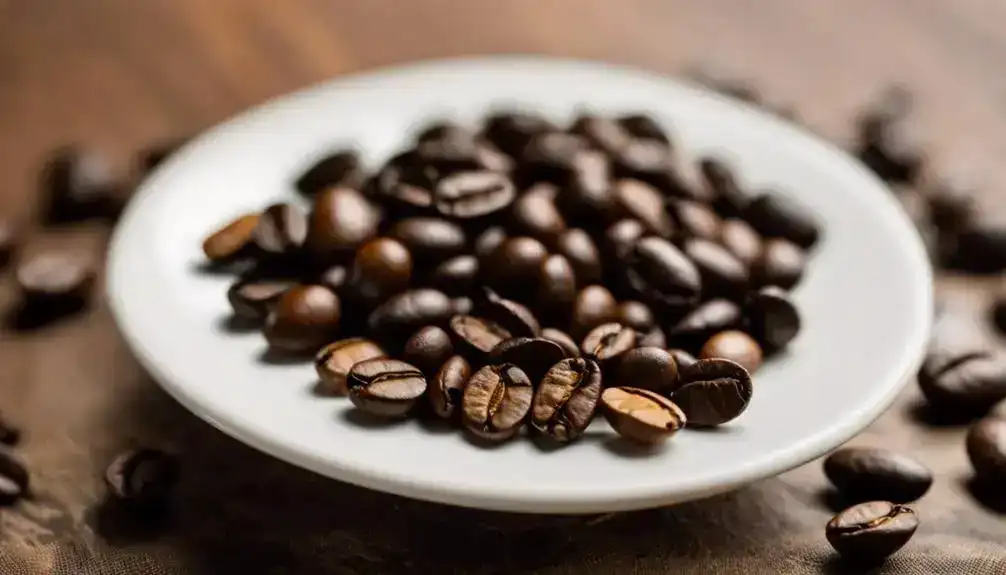
When considering Conilon vs. Robusta coffee, it’s crucial to recognize the ongoing efforts to challenge the misconception of lower quality associated with these varieties.
Innovations in post-harvest processing and a deeper understanding of their unique sensory attributes are enhancing the market acceptance of Conilon and Robusta coffees.
Overcoming Quality Misconceptions
Despite their historical reputation for lower quality compared to Arabica, both Conilon and Robusta coffee varieties are undergoing significant advancements in quality improvement and sensory profiles, challenging misconceptions in the specialty coffee market.
Quality perceptions:
Conilon and Robusta are no longer seen as inferior coffee varieties, as advancements in cultivation and processing techniques have elevated their quality to meet specialty coffee standards.
Sensory innovations:
Through meticulous processing and roasting methods, Conilon and Robusta coffees now offer a diverse range of flavors and aromas, expanding the sensory experience for coffee enthusiasts.
Market acceptance:
The growing acceptance of high-quality Conilon and Robusta coffees in the market showcases a shift in consumer preferences towards distinct and robust flavor profiles, highlighting the changing landscape of specialty coffee consumption.
These developments emphasize the dynamic nature of the coffee industry, where traditional perceptions are being reshaped by continuous innovation and a deeper understanding of the unique qualities each coffee variety has to offer.
Sensory Attributes and Market Acceptance
Advancements in cultivation and processing techniques have transformed the quality perception of Conilon and Robusta coffees, especially concerning their sensory attributes and market acceptance. The evolving market trends and consumer preferences have led to a reevaluation of these coffee varieties, shedding light on their unique flavor profiles and potential in specialty markets.
To provide a clearer understanding, let’s compare the sensory attributes and market acceptance of Conilon and Robusta coffees:
| Conilon Coffee | Robusta Coffee |
|---|---|
| Earthy tones and nutty flavors | Bold and strong taste with chocolatey notes |
| Increasing popularity in specialty markets | Widely used in espresso blends for its crema and body |
| Growing demand due to its unique profile | Known for its high caffeine content and consistent flavor |
These distinct characteristics play a significant role in shaping the quality perception of Conilon and Robusta coffees, influencing consumer choices and market dynamics. As the industry continues to explore new processing methods and elevate sensory experiences, both varieties are carving out a niche for themselves in the competitive coffee landscape.
Conilon vs. Robusta Coffee: Climate Resilience and Agricultural Practices

Robusta and Conilon coffee varieties exhibit significant adaptability to climate change, making them essential for the future of coffee farming.
Future research directions and agricultural innovations are focused on enhancing their resilience to higher temperatures and pests.
Understanding the genetic diversity and agricultural practices of these varieties is key to sustaining coffee production in the face of global challenges.
Robusta’s and Conilon’s Adaptability to Climate Change
When considering the adaptability of Conilon and Robusta coffee varieties to climate change, their genetic diversity plays a pivotal role in shaping their resilience and survival in changing environmental conditions.
- Resilience assessment: The ability of both Conilon and Robusta to withstand varying climates is important for long-term coffee production.
- Adaptation strategies: Understanding how these varieties can adapt to shifting environmental conditions is vital for sustainable farming practices.
- Genetic diversity: The unique genetic makeup of Conilon and Robusta influences their responses to climate change, highlighting the importance of preserving and utilizing this diversity for future agricultural resilience.
Both Conilon and Robusta possess inherent characteristics that equip them to thrive under different climatic scenarios. By leveraging their genetic diversity and implementing effective adaptation strategies, coffee farmers can secure the continued success of these varieties in the face of ongoing climate challenges.
Future Research Directions and Agricultural Innovations
Exploring innovative agricultural practices and future research directions is crucial for enhancing the climate resilience of Conilon and Robusta coffee varieties.
To guarantee the sustainability of coffee production in changing environmental conditions, consider the following:
- Innovative technologies: Embracing cutting-edge tools and methods can help improve crop yields and quality while minimizing environmental impact.
- Sustainable practices: Implementing eco-friendly farming techniques not only benefits the environment but also enhances the long-term viability of coffee cultivation.
- Genetic modification: Researching and implementing genetic modifications tailored to the specific needs of Conilon and Robusta varieties can boost their resilience and adaptability to climate fluctuations.
Conclusion
In the world of coffee, understanding the differences between Conilon and Robusta is key. Remember: ‘Knowledge is power.’
By delving into their genetic makeup, photosynthesis capabilities, root systems, and sensory attributes, you gain a deeper appreciation for these diverse coffee varieties.
Whether you’re a coffee farmer or enthusiast, the insights gained from comparing Conilon and Robusta can help you make informed decisions and elevate your coffee experience.
Embrace the nuances of these unique species and savor the richness they offer.

